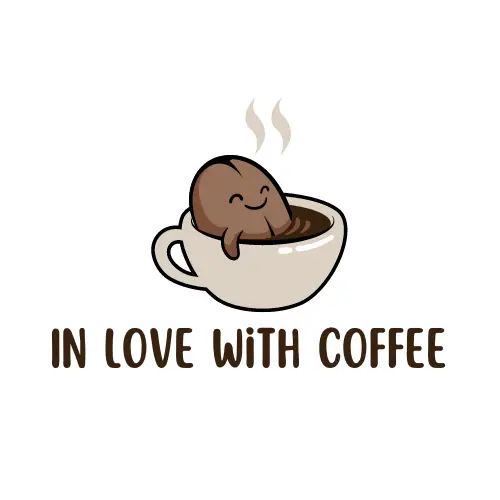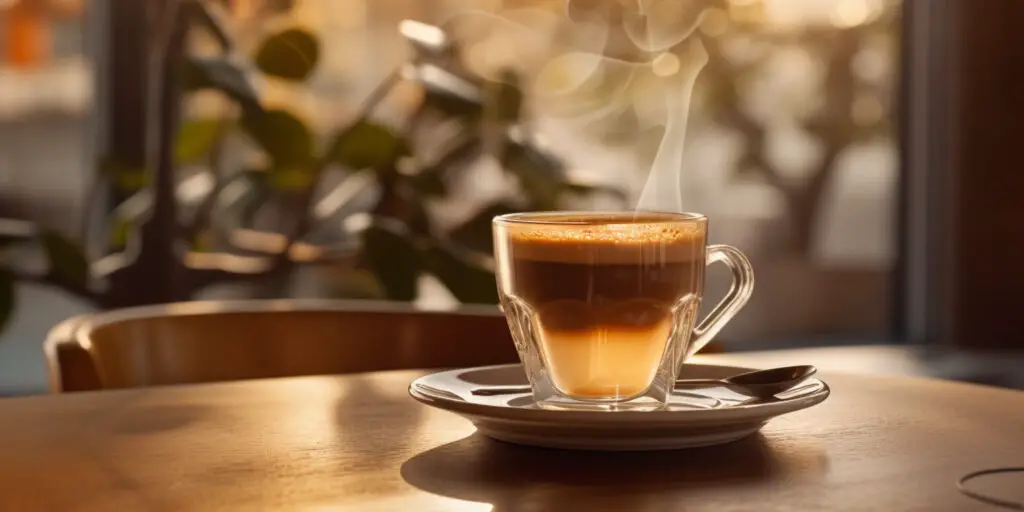Coffee, the beloved beverage enjoyed by millions around the world, is more than just a pick-me-up; it’s an experience. Describing coffee in a way that captures its complexity and nuances requires a rich vocabulary and a keen sense of taste. Whether you’re a coffee fan, a barista, or simply someone who appreciates a good cup of joe, knowing the right words to describe coffee can enhance your enjoyment and understanding of this exquisite beverage.
In this article, we will explore the art of coffee description, providing you with a comprehensive list of high-quality coffee descriptors and adjectives that will elevate your coffee-tasting experience to new heights.
The Importance of Coffee Description
Before delving into the world of coffee descriptors, it’s crucial to understand why coffee description matters. Coffee connoisseurs and professionals use words and phrases to paint a vivid picture of a particular coffee’s taste, aroma, body, and overall profile. These descriptions help consumers make informed decisions and foster an appreciation for the intricacies and diversity of different coffee varieties.
The Other Words For Coffee
Coffee, the beloved beverage enjoyed worldwide, has accumulated numerous alternative names throughout its long history. These alternate monikers reflect the diverse cultures and languages that have embraced coffee as an integral part of their daily lives. Here are some of the other names for coffee:
- Java: This term, originating from the Indonesian island of Java, has become synonymous with coffee. It pays homage to one of the earliest coffee-producing regions.
- Joe: A popular nickname for coffee in the United States, “Joe” is believed to have originated from the association between coffee and the common name “Josephus.”
- Cup of Joe: This phrase is often used as a colloquial expression for a serving of coffee. Its exact origin is uncertain, but it is speculated that it emerged in the U.S. Navy, where coffee was a staple beverage.
- Brew: Referring to the process of preparing coffee, “brew” has become a casual term used to describe a cup of coffee.
- Java Juice: This playful phrase emphasizes coffee’s energizing qualities while incorporating the term “Java” as a nod to its Indonesian roots.
- Morning Fuel: Highlighting coffee’s role in providing a much-needed energy boost to start the day, this name emphasizes its stimulating properties.
- Black Gold: This metaphorical term underscores the value and importance of coffee in various cultures, comparing it to the preciousness of gold.
- Elixir of Life: Often used humorously, this name reflects the belief held by many coffee enthusiasts that their morning cup is a vital elixir that rejuvenates and uplifts.
These alternative names for coffee showcase the linguistic diversity surrounding this beloved beverage and add charm and cultural significance to the coffee-drinking experience. Whether you refer to it as java, joe, brew, or any other name, the joy of savoring a perfectly brewed cup remains constant.
What Are the 4 Characteristics of Coffee?
With its diverse range of flavors and profiles, coffee possesses four key characteristics defining its quality and appeal. These characteristics, also known as the “Four Cs of Coffee,” encompass the fundamental aspects that shape the overall experience of consuming this beloved beverage.
- Complexity: Complexity refers to the intricate and multi-dimensional flavor profile of coffee. A high-quality coffee exhibits a rich tapestry of flavors, often consisting of multiple taste notes that unfold on the palate. These can include fruity, floral, chocolatey, nutty, or even spicy undertones, creating a complex and engaging sensory experience.
- Acidity: Acidity in coffee refers to its perceived brightness and liveliness on the palate. It is a desirable characteristic that adds vibrancy and depth to the flavor profile. Well-balanced acidity enhances the overall taste experience, offering a pleasant tanginess or crispness without overpowering the other flavors.
- Body: The body describes the physical sensation and weight of the coffee on the tongue. It ranges from light to medium to full-bodied. A coffee with a fuller body tends to have a richer and more robust mouthfeel, often described as velvety, creamy, or syrupy. The body of the coffee contributes to its overall texture and perceived richness.
- Aroma: The aroma of coffee plays a crucial role in the overall sensory experience. It encompasses the fragrance that wafts from the cup, enticing the senses before the first sip. The aroma can be described as floral, fruity, nutty, earthy, or even spicy, and it sets the stage for the following flavors.
These four characteristics – complexity, acidity, body, and aroma – intertwine to create each cup of coffee’s unique identity and enjoyment. Understanding and appreciating these qualities allows coffee lovers to discern better and savor the nuances found in different varieties and origins of coffee.
How to Describe Coffee?
Describing coffee accurately requires a combination of sensory perception, vocabulary, and familiarity with coffee terminology. Here are some key aspects to consider when describing coffee:
- Aroma: The aroma of coffee is one of its most distinctive and captivating features. Use words like fragrant, aromatic, floral, fruity, nutty, or earthy to capture the essence of the coffee’s scent.
- Flavor: When describing the flavor of coffee, focus on the taste notes that come to the forefront. Common flavor descriptors include bold, smooth, rich, balanced, sweet, bitter, chocolatey, caramel, citrusy, herbal, or spicy.
- Body: The body refers to the weight and texture of the coffee on the palate. Words like full-bodied, light-bodied, silky, creamy, or velvety can help convey the coffee’s mouthfeel.
- Acidity: Acidity in coffee refers to its brightness and liveliness. Use bright, crisp, lively, tangy, or citrus-like words to describe the coffee’s acidity level.
- Aftertaste: The lingering flavors that remain after swallowing the coffee are part of its aftertaste. Mention characteristics like lingering, clean, pleasant, or lingering notes of chocolate, berries, or nuts.
High-Quality Words to Describe Coffee
To elevate your coffee descriptions, here is an extensive list of high-quality coffee descriptors and adjectives:
Aroma Descriptors
- Floral
- Fruity
- Nutty
- Spicy
- Earthy
- Herbal
- Toasted
- Caramelized
- Woody
- Smoky
Flavor Descriptors
- Complex
- Robust
- Velvety
- Smooth
- Balanced
- Mellow
- Intense
- Sweet
- Bitter
- Citrusy
Body Descriptors
- Full-bodied
- Light-bodied
- Creamy
- Silky
- Thick
- Thin
- Viscous
- Smooth
Acidity Descriptors
- Bright
- Crisp
- Vibrant
- Lively
- Tangy
- Citrus-like
- Wine-like
- Subtle
Aftertaste Descriptors
- Lingering
- Clean
- Satisfying
- Sweet finish
- Nutty aftertaste
- Balanced aftertaste
- Subtle hints of chocolate
- Notes of berries
How Would You Describe Your Favorite Coffee: The Best Tips
Describing a favorite coffee is a delightful task that allows you to share your passion and appreciation for a specific brew. To effectively convey the essence of your favorite coffee, consider the following tips:
- Start with the basics: Begin by mentioning the type of coffee you prefer, such as espresso, drip coffee, or a specific brewing method. This provides context for your description.
- Aroma: Capture the aromatic experience by highlighting the captivating scents that entice your senses. Is it rich and chocolaty, floral and delicate, or perhaps earthy and nutty? Use descriptive words to paint a vivid picture of the coffee’s aroma.
- Flavor profile: Delve into the taste experience by identifying the primary flavor notes that make your favorite coffee stand out. Is it smooth and balanced, with hints of caramel and dark chocolate? Does it have a bright acidity with fruity undertones? Be specific in your description to evoke the unique taste profile.
- Mouthfeel: Discuss the texture and body of the coffee. Is it light-bodied and refreshing, or full-bodied and velvety? Consider how the coffee feels on your palate and the sensations it evokes.
- Aftertaste: Describe the lingering flavors and sensations that remain after each sip. Does it leave a pleasant sweetness or a subtle bitterness? Is there a delightful lingering note of berries or a nutty finish? Share how the aftertaste contributes to your enjoyment of the coffee.
- Personal connection: Express why this coffee is your favorite. Does it evoke memories and comfort or make your day brighter? Share your personal connection and the emotions it stirs within you.
Remember to use vivid language and sensory details to create a vivid and engaging description. By sharing your experience and passion for your favorite coffee, you invite others to discover and appreciate its unique qualities.
Words that Rhyme with Coffee
Finding words that rhyme with “coffee” can be a fun exercise in exploring the musicality of language. Here are some words that rhyme or have a close rhyme with “coffee”:
- Toffee: A sweet confection made from caramelized sugar and butter, toffee rhymes perfectly with “coffee.” It brings to mind a delectable treat that pairs well with a hot cup of java.
- Trophy: While not an exact rhyme, the ending sound of “trophy” closely resembles “coffee.” This word evokes a sense of achievement and victory, making it an interesting pairing with the comforting beverage.
- Softly: This word shares a similar ending sound with “coffee.” It conjures images of gentle, soothing actions, reflecting the comforting and cozy nature of enjoying a warm cup of coffee.
- Loftier: A word that has a close rhyme with “coffee,” “loftier” suggests something grander or more elevated. It can be used creatively to describe the aspirations and inspirations that coffee may bring.
- Frothy: This word not only rhymes with “coffee” but also reflects one of its delightful characteristics. Frothy” conjures images of creamy foam atop a freshly brewed cup, adding to the visual and textural appeal.
- Coughy: A playful word that has a near rhyme with “coffee.” While not a real word, it can be used humorously to describe a cup of coffee that may have an unintended effect on the throat.
- Gauzy: This word rhymes partially with “coffee” and brings a delicate and transparent quality to mind. It can be used metaphorically to describe the lightness and subtlety of certain coffee flavors or the experience of sipping a refined brew.
Remember, rhyme can be subjective, as it depends on regional accents and variations in pronunciation. These suggestions can serve as a starting point for creative expression, whether in poetry, songwriting, or simply adding a touch of linguistic playfulness to your conversations about coffee.
Enhancing Your Coffee Vocabulary
To expand your repertoire of words for coffee, immerse yourself in the world of coffee literature, attend coffee cupping sessions, and engage in discussions with fellow coffee enthusiasts and professionals. Additionally, exploring the diverse range of coffee origins, processing methods, and brewing techniques can further refine your ability to describe and appreciate coffee.
Conclusion
The coffee description is an art that enhances the coffee-tasting experience by capturing its multifaceted nature. The right words and phrases can transport the reader or listener to the origins, flavors, and aromas of the coffee being described. By utilizing high-quality adjectives to describe coffee, you can communicate your appreciation for this beloved beverage more effectively and help others discover their perfect cup. So, the next time you savor a freshly brewed coffee, take a moment to explore the intricate details and immerse yourself in its richness using the power of words.
Keep in minnd – the world of coffee is vast, and there are countless ways to describe its wonders. Expand your coffee vocabulary, experiment with different beans, and continue to explore the endless possibilities of the coffee universe.

